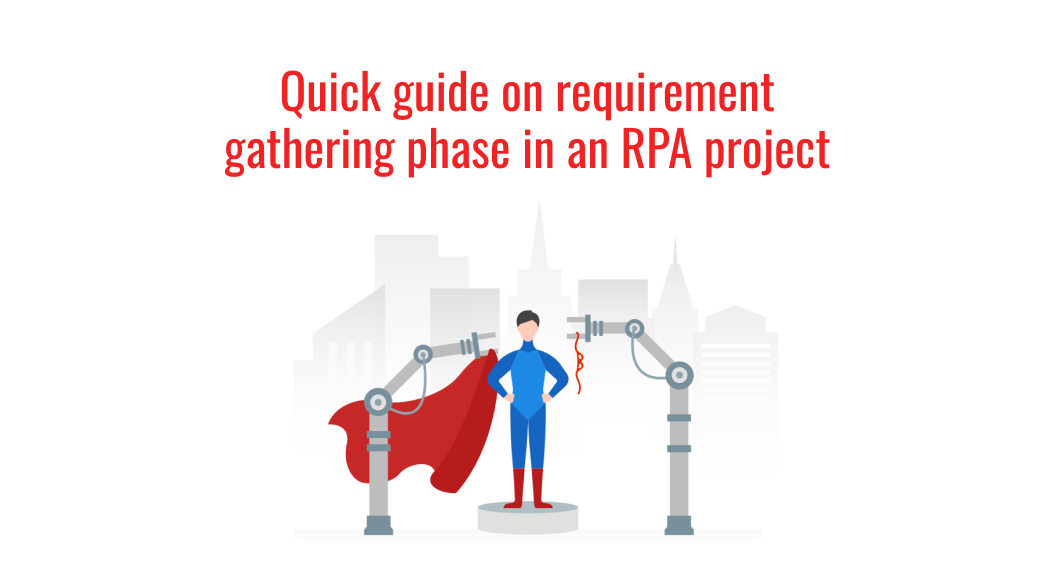RPA projects have a pattern and here is a curated set of questions that can be asked for every RPA project. You are almost set to rock and roll on the project if you have got answers to some of these questions.
Requirement gathering phase is the first step in a project kick-off. The requirement gathering phase helps in defining the scope, cost and timeline of the project. But there is a high possibility of misunderstanding in the scope, if the right questions are not asked.
RPA projects have a pattern and here is a curated set of questions that can be asked for every RPA project. You are almost set to rock and roll on the project if you have got answers for the below! However, there will be additional questions varying from project to project to help in better understanding and evaluation.
- Is the workflow documented?
- If Yes, Convert them into Flowcharts
- Else, start documenting the workflow by recording all the details of the manual process
- What is the measurable goal the customer is looking to achieve with RPA?
- Break the flowchart into sub-tasks.
- Why sub-task? Every sub-task will require different resources. Each resource has to be mapped and documented to understand the task’s resource allocation. Also, every task is connected to other tasks which will build the proper workflow, in reverse. This way, validation happens both ways.
- Subtasks are documented and validated by Customer’s SME to allot proper user roles, authentications and such. A particular user role might not execute a few tasks, and the SME people review these validations.
- What are the tasks that need a human’s intervention?
- What are the tasks that are connected to the internet?
- Are there any tasks that use FTP or any remote protocol to access any data? This information is used to set up proper credentials on the agent computer to access the data in hand.
- Every subtask has different error handling strategies. Some tasks error should navigate in a way that it has to retry after an hour. Some tasks should send an email alert. What is the customer’s preferred method for error handling?
- What is the platform of the agents? What versions of the software are going to interact? Say, the interaction of a CRM desktop application is getting automated; this version should be recorded because, at times, the whole GUI might change between versions.
Have you got your answers for all these questions? Then, there is no waiting; get started with you RPA project right away. You can know about how the process of an RPA project should be structured, here.
If you have any questions that you think will add value to the requirement phase, feel free to write to us.
Up next
Create a Microsoft Teams Bot with Ruby on Rails and REST API Skcript
/svr/quick-guide-on-requirement-gathering-phase-in-an-rpa-project/
/svrmedia/heroes/quick-guide-on-requirement-gathering-phase-in-an-rpa-project@1.5x.png
Skcript
/svr/quick-guide-on-requirement-gathering-phase-in-an-rpa-project/
/svrmedia/heroes/quick-guide-on-requirement-gathering-phase-in-an-rpa-project@1.5x.png
